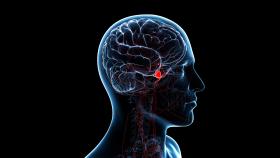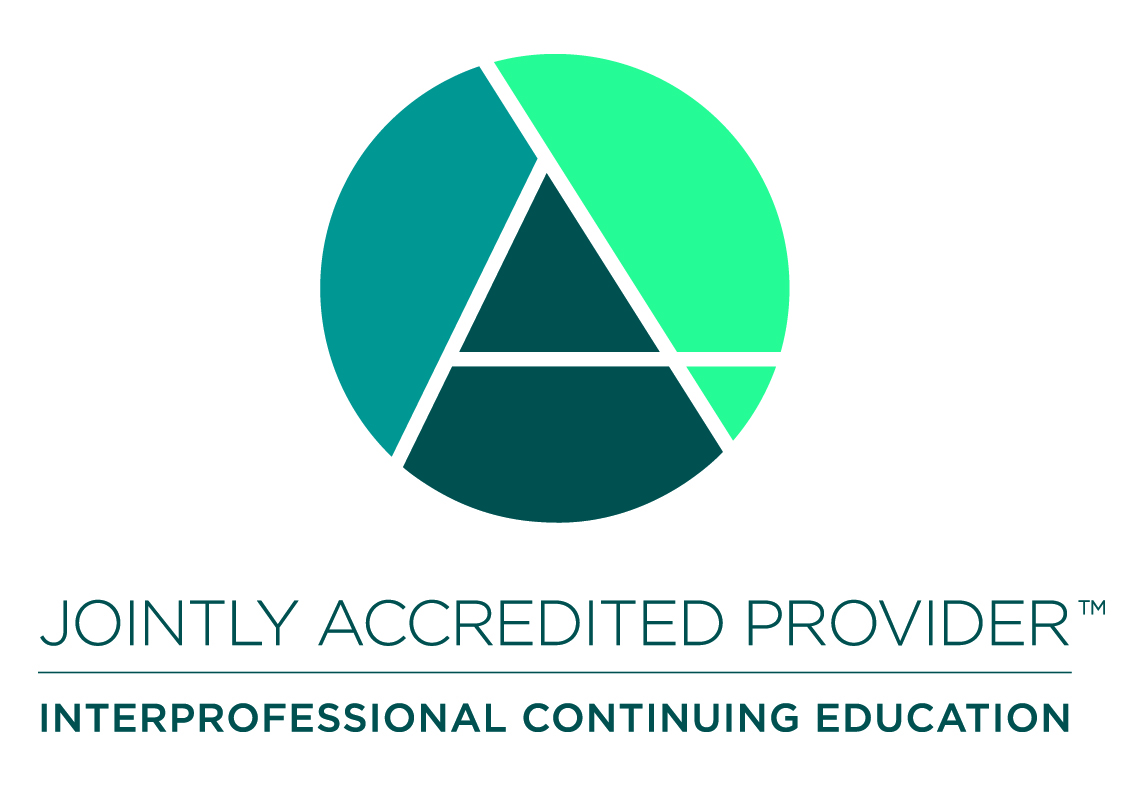
0480_SHVGR_Intracranial Aneurysms: Managing a Ticking Time Bomb_Live
Description:
Intracranial aneurysms are relatively common, occurring in nearly 4% of the global population. Approximately 30,000 people in the United States suffer a rupture. If an intracranial aneurysm ruptures, it may bleed into the brain parenchyma resulting in a parenchymal hemorrhage, including subarachnoid space, resulting in a subarachnoid hemorrhage (SAH). This is a disastrous event with sweeping mortality rates and severe risk of permanent disability for those who survive the complication. Recent updates in treatment guidelines demand attention by those treating patients who suffer from uninterrupted intracranial aneurisms. This topic will address those guidelines and help general and specialist practitioners to guide their patients to the appropriate provider.
Target Audience
Nurse Practitioner (NP)
Nurse, Registered (RN)
Pharmacists (PharmD)
Physicians (MD or DO)
Physician Assistant (PA)
Psychologists
Social Workers
Other Healthcare Professionals
Students of Health Professions
Learning Objectives
After completing this activity, learners will be able to:
1.) Define updated guidelines for a ruptured aneurysm, or aneurysmal subarachnoid hemorrhage.
2.) Review literature on incidental unruptured aneurysms to assess when to treat versus observe.
3.) Discuss interventional devices and procedures to address open surgical and endovascular practices.
Assembly Bills 1195 & 241- Culturally Appropriate Care which is Free of Implicit Biases:
Social Determinants of Health Reference
Etminan N, Chang HS, Hackenberg K, de Rooij NK, Vergouwen MDI, Rinkel GJE, Algra A. Worldwide incidence of aneurysmal subarachnoid hemorrhage according to region, time period, blood pressure, and smoking prevalence in the population: a systematic review and meta-analysis.JAMA Neurol . 2019 ;76:588–597. doi: 10.1001/jamaneurol.2019.0006
Implicit Bias Reference
Kandregula, S., Savardekar, A., Beyl, R., Caskey, J., Terrell, D., Adeeb, N., ... & Guthikonda, B. (2023). Health inequities and socioeconomic factors predicting the access to treatment for unruptured intracranial aneurysms in the USA in the last 20 years: interaction effect of race, gender, and insurance. Journal of NeuroInterventional Surgery, 15(12), 1251-1256.
Gnanagurudasan Prakasam, MD, a planning team member for this activity, receives consultant fees from Novo Nordisk (related to growth hormones), Medtronic (related to insulin pumps), Dexcom (related to glucose sensors), Mannkind (related to inhaled insulin), Alexion (related to HPP), and K Kirin (related to XLH) as well as speaker fees from Lilly (related to diabetes), Sanozi (related to Diabetes Type 1 prevention), and Abbvie (related to puberty). These ineligible relationships were deemed not relevant to this activity’s topic, and thus mitigation was not needed.
Sophia Humphreys, PharmD, a planning team member for this activity has recently ended financial relationships with the following ineligible companies: Pharmacosmos (ended 12/2023), Fresenius Kabi (ended 10/2022), and Heron (ended 10/2022).
No one else involved in the planning or presentation of this educational activity have any relevant financial relationship(s) to disclose with ineligible companies whose primary business is producing, marketing, selling, re-selling, or distributing healthcare products used by or on patients. No financial or in-kind commercial support was received to produce or promote this educational activity.
Additional faculty involved the planning of this learning activity are as follows:
Carolin Delker, NP
Max Ingersoll, FNP-BC, MSN
Jill Kacher Cobb, MD
Tam Nguyen, MD
Lori Petrini
Michelle Mah
Luanne Ridgley, LSW
Christopher Mack
– Provider Designee/Verification: Kerri Maya, PhD(c), MSL, RN, NPD-BC
Tamar Binyamin, MD
Tamar Binyamin, MD
Accreditation

In support of improving patient care, Sutter Health, is jointly accredited by the Accreditation Council for Continuing Medical Education (ACCME), the Accreditation Council for Pharmacy Education (ACPE), the American Nurses Credentialing Center (ANCC), and the Association of Social Work Boards (ASWB) to provide continuing education for the healthcare team.
Credit Designation Statement
Sutter Health designates this LIVE activity for a maximum of 1.00 AMA PRA Category 1 Credits™ for physicians, 1.00 continuing professional development contact hours for nurses, 1.00 knowledge-based contact hours for pharmacists, and 1.00 approved continuing education hours for social workers. Learners should claim only the credit commensurate with the extent of their participation in the activity.
Note to Other Disciplines: AMA PRA Category 1 Credits HOURS™ Continuing Medical Education is acceptable for meeting the continuing education requirements for Pharmacists, Physician Assistants, Psychologists, Registered Nurses, and Respiratory Care Practitioners. For other disciplines, please check with the regulatory board for your discipline to confirm what type of credits meet the continuing education requirements. Continuing education hours for nurses accredited by ANCC, via Joint Accreditation.
Attendance & Credit Claiming
Text the 6-letter attendance verification code to (916) 866-7913 to claim credit.
Available Credit
- 1.00 ACPE
Pharmacy Credit - Accreditation Council of Pharmacy Education (ACPE)
Sutter Health designates this Live activity for a maximum of 1.00 of ACPE credit(s). Credits for pharmacists and technicians will be transmitted to CPE Monitor and will be available within 60 days post-activity pending submission of individual NABP e-PID and DOB (mm/dd only). Pharmacists should claim only the credit commensurate with the extent of their participation in the activity.
- 1.00 AMA PRA Category 1 Credit™
Physician Credit
Sutter Health designates this Live activity for a maximum of 1.00 AMA PRA Category 1 Credit™ for physicians. Physicians should claim only the credit commensurate with the extent of their participation in the activity.
- 1.00 Non-Physician Participation Credit
Sutter Health designates this Live activity for a maximum of 1.00 Non-Physician Participation Credit. Non-Physicians should claim only the credit commensurate with the extent of their participation in the activity.
AMA PRA Category 1 Credits HOURS™ Continuing Medical Education is acceptable for meeting the continuing education requirements for Pharmacists, Physician Assistants, Psychologists, Registered Nurses, and Respiratory Care Practitioners. For other disciplines, please check with the regulatory board for your discipline to confirm what type of credits meet the continuing education requirements. Continuing education hours for nurses accredited by ANCC, via Joint Accreditation.
- 1.00 ANCC
Nursing Credit - American Nurses Credentialing Center (ANCC)
Sutter Health designates this Live activity for a maximum of 1.00 ANCC contact hour(s). Nurses should claim only the credit commensurate with the extent of their participation in the activity.
- 1.00 ASWB-ACE
Social Work Credit
As a Jointly Accredited Organization, Sutter Health is approved to offer social work continuing education by the Association of Social Work Boards (ASWB) Approved Continuing Education (ACE) program. Organizations, not individual courses, are approved under this program. Regulatory boards are the final authority on courses accepted for continuing education credit. Social workers completing this course receive 1.00 continuing education credits.
- 1.00 CA BRN
Nursing Credit - California Board of Registered Nursing (CA BRN)
This activity is approved for 1.00 contact hour(s) by Sutter Health, which is an approved provider by the California Board of Registered Nursing. (Provider Number 17182). Nurses should claim only the credit commensurate with the extent of their participation in the activity. - 1.00 IPCE
This activity was planned by and for the healthcare team, and learners will receive 1.00 Interprofessional Continuing Education (IPCE) credit for learning and change.

 Facebook
Facebook X
X LinkedIn
LinkedIn Forward
Forward